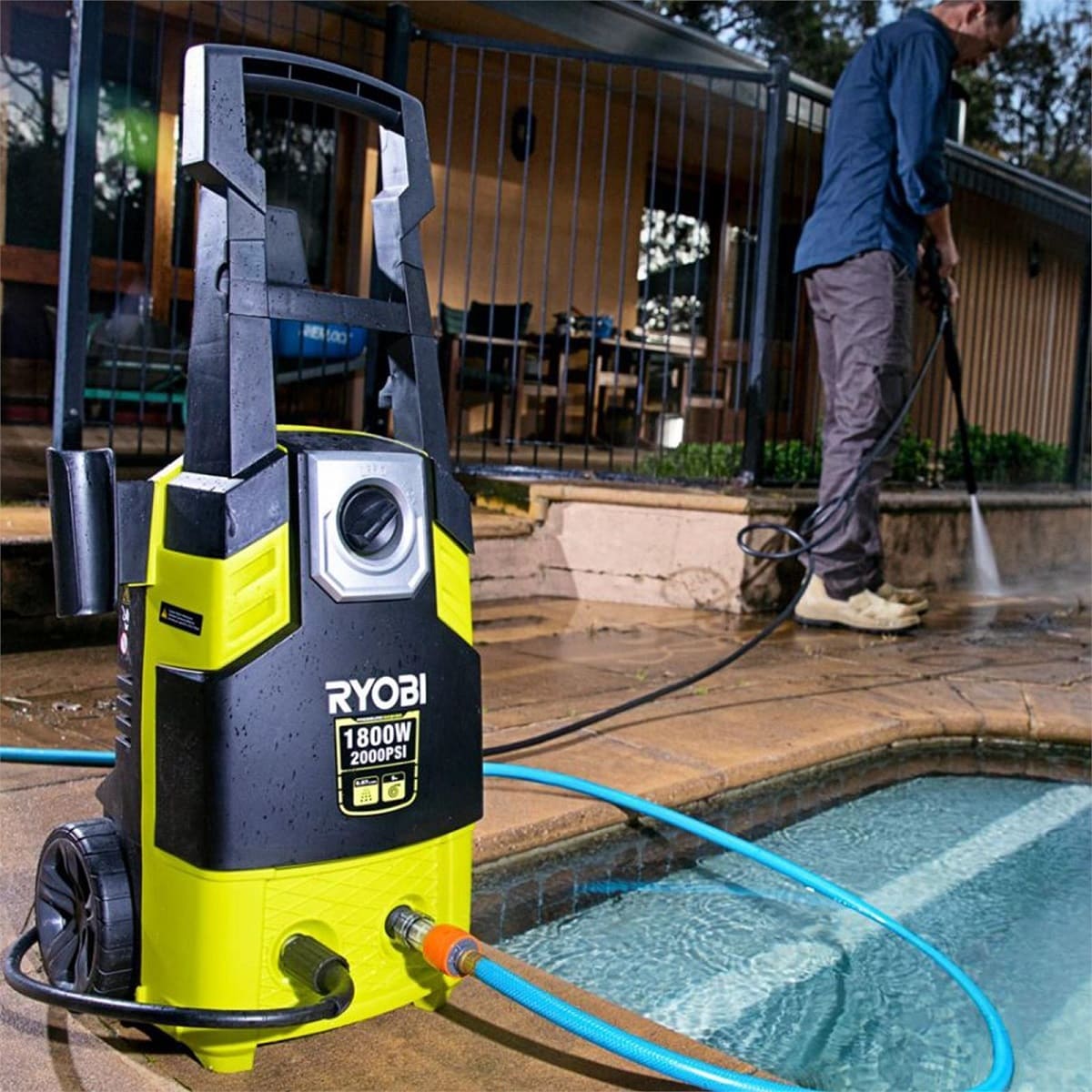

Articles
How To Use Ryobi Pressure Washer
Modified: August 25, 2024
Learn how to use a Ryobi pressure washer effectively with our detailed articles. Get tips and advice on maximizing its cleaning power and maintaining its performance.
(Many of the links in this article redirect to a specific reviewed product. Your purchase of these products through affiliate links helps to generate commission for Storables.com, at no extra cost. Learn more)
Introduction
Welcome to this comprehensive guide on how to use a Ryobi pressure washer. If you’ve recently purchased a Ryobi pressure washer or are considering getting one, you’re in the right place. This article will walk you through the essential steps for safely and effectively using your pressure washer to tackle a variety of cleaning tasks around your home.
Ryobi is a well-known and trusted brand that offers a range of pressure washers suitable for both residential and commercial use. With their powerful engines and adjustable pressure settings, Ryobi pressure washers are versatile tools that can help you remove dirt, grime, mold, and other tough stains from various surfaces. Whether you’re cleaning your driveway, deck, patio furniture, or even your car, a Ryobi pressure washer can make the job faster and easier.
However, before you dive in and start blasting away, it’s important to familiarize yourself with some key safety precautions. While pressure washers are effective cleaning tools, they can also be dangerous if not handled properly. So, let’s cover some essential safety guidelines to ensure that you have a safe and successful pressure washing experience.
Key Takeaways:
- Safety First!
Before using your Ryobi pressure washer, prioritize safety by reading the user manual, wearing protective gear, and choosing a suitable location. This ensures a safe and successful cleaning experience. - Maintenance Matters
Regular maintenance, including cleaning, inspecting, and preparing for winter storage, is crucial for keeping your Ryobi pressure washer in excellent working condition. Follow these tips to extend its lifespan and ensure reliable performance.
Read more: What Soap To Use In Ryobi Pressure Washer
Safety Precautions
Before you begin using your Ryobi pressure washer, it’s crucial to prioritize safety. By following these safety precautions, you can minimize the risk of accidents and ensure a safe cleaning experience.
Read the User Manual
The first step in using any new device or equipment is to thoroughly read the user manual. This will provide you with valuable information on the specific model of your Ryobi pressure washer, including its features, operating instructions, and safety guidelines. Familiarize yourself with the manual to gain a complete understanding of how to use the pressure washer safely and effectively.
Wear Protective Gear
When operating a pressure washer, it’s important to protect yourself from potential hazards. Always wear the appropriate protective gear, including safety goggles, gloves, and closed-toe shoes. Safety goggles will protect your eyes from flying debris and water splashes, while gloves will shield your hands from chemicals, hot surfaces, and abrasive materials. Closed-toe shoes offer protection against slipping and injury.
Choose a Suitable Location
When using a pressure washer, it’s crucial to choose a suitable location that minimizes risks to yourself, others, and the surrounding property. Here are a few factors to consider:
- Ensure you have ample space to move around comfortably and safely.
- Avoid using the pressure washer near children, pets, or bystanders who could be at risk of injury from the high-pressure stream.
- Keep in mind that the powerful jet of water produced by the pressure washer can damage delicate surfaces, so avoid using it on glass, painted surfaces, or other fragile materials.
- If you plan to use detergents or chemicals, avoid areas where the runoff could harm plants, animals, or the environment. Use caution when working near bodies of water or storm drains.
- Consider the noise level of the pressure washer and its potential impact on your neighbors. Try to choose a time and location that will minimize disturbance.
By following these safety precautions, you can ensure a safer pressure washing experience. Now that we’ve covered the essential safety guidelines, let’s move on to the assembly and set-up process for your Ryobi pressure washer.
Assembly and Set Up
Once you’ve taken the necessary safety precautions, it’s time to assemble and set up your Ryobi pressure washer. Follow these steps to prepare your equipment for operation:
Unpack and Inspect the Pressure Washer
Start by carefully unpacking your Ryobi pressure washer and inspecting it for any visible damage. Check for any loose or missing parts and ensure that all components are in good working condition. If you notice any issues or concerns, contact Ryobi customer support for assistance.
Attach the Handle and Trigger Gun
The next step is to attach the handle to the pressure washer unit. Align the handle with the corresponding slots on the unit and firmly push it into place until it clicks securely. Then, attach the trigger gun to the end of the handle by aligning the grooves and twisting it clockwise until it locks into position. Ensure that the connections are tight and stable.
Connect the Hoses and Cables
Connect the high-pressure hose to the water outlet on the pressure washer unit. Attach the other end of the hose to the spray gun by aligning the grooves and twisting it clockwise until it locks securely. Ensure that the connection is tight to prevent leaks.
Next, connect the garden hose to the water inlet on the pressure washer unit. Ensure that the connection is tight to prevent water leakage. If your pressure washer has a detergent tank, connect the detergent hose to the designated inlet on the pressure washer unit.
Read more: What Oil Does A Ryobi Pressure Washer Use
Fill the Pressure Washer with Water and Detergent (if applicable)
If your pressure washer has a built-in detergent tank, fill it with the recommended cleaning solution. Be sure to use a detergent specifically designed for pressure washers. If your pressure washer does not have a built-in detergent tank, use a separate container that can be connected to the detergent hose.
Next, turn on the water supply and let the water flow through the hoses to remove any air pockets. Once water is flowing smoothly, squeeze the trigger on the spray gun to release any trapped air from the system.
Congratulations! Your Ryobi pressure washer is now assembled and ready for use. In the next section, we’ll explore how to operate the pressure washer effectively and achieve optimal cleaning results.
Operating the Pressure Washer
Now that your Ryobi pressure washer is set up, it’s time to learn how to operate it effectively. Follow these steps to get the most out of your pressure washer:
Starting and Stopping the Engine
To start the engine, ensure that the fuel tank is filled with the appropriate gasoline and the oil levels are sufficient. Follow the instructions in the user manual to start the engine using the on/off switch or pull-start mechanism.
To stop the engine, simply turn the engine off using the designated switch or knob. Allow the engine to cool down before performing any maintenance or storing the pressure washer.
Adjusting the Pressure
Ryobi pressure washers typically feature an adjustable pressure control valve or a pressure regulator knob. Use this feature to adjust the pressure output according to the cleaning task at hand. Turn the valve or knob clockwise to increase the pressure and counterclockwise to decrease it.
It’s important to note that different surfaces require different pressure levels. Higher pressures are suitable for removing stubborn dirt and stains from hard surfaces like concrete or brick, while lower pressures are more appropriate for delicate surfaces like wood or glass.
Read more: How To Start A Ryobi Pressure Washer
Using the Spray Wand and Nozzles
Your Ryobi pressure washer comes with a spray wand and a variety of nozzles that control the spray pattern and intensity. Attach the desired nozzle to the end of the spray wand by aligning the grooves and twisting it into place. Common nozzle options include:
- 0-degree nozzle: Provides a concentrated, powerful stream for deep cleaning or removing tough stains.
- 15-degree nozzle: Offers a narrower spray pattern for heavy-duty cleaning tasks.
- 25-degree nozzle: Provides a wider spray angle for general cleaning and maintenance.
- 40-degree nozzle: Offers a wide spray pattern suitable for more delicate surfaces.
- Detergent nozzle: Used for applying detergent solutions, if your pressure washer has a dedicated detergent tank.
When using the spray wand, it’s important to maintain a consistent distance between the nozzle and the surface being cleaned. Start with a distance of about 12 to 18 inches and adjust as needed. Move the spray wand in a continuous motion to avoid uneven cleaning or damage to the surface.
Cleaning Different Surfaces (e.g., driveways, decks, vehicles)
Ryobi pressure washers are versatile tools that can handle a wide range of cleaning tasks. Here are some tips for cleaning different surfaces:
- Driveways and sidewalks: Use a high-pressure nozzle to remove dirt, grime, and oil stains. Move the spray wand in a sweeping motion and maintain a consistent distance.
- Decks and patios: Use a lower-pressure nozzle to avoid damaging the wood or other delicate materials. Apply a suitable deck cleaning solution if necessary.
- Vehicles: Use a wide-angle spray nozzle to avoid damaging the paint. Start from the top and work your way down, rinsing off soap and dirt as you go.
Always test the pressure and technique on a small, inconspicuous area before proceeding to clean the entire surface. This will help you determine the appropriate pressure and avoid any potential damage.
Remember to take breaks as needed and never leave the pressure washer unattended during operation. In the next section, we’ll discuss the importance of regular maintenance and care for your Ryobi pressure washer.
Maintenance and Care
To ensure the long-term performance and reliability of your Ryobi pressure washer, regular maintenance and care are essential. By following these maintenance tips, you can keep your pressure washer in excellent working condition:
Regular Cleaning and Inspection
After each use, thoroughly clean your pressure washer to remove any dirt, debris, or detergent residue. Be sure to turn off the engine and disconnect the power source before cleaning. Use a soft brush or cloth to gently scrub the exterior surfaces, and rinse with clean water. Inspect the hoses, gun, and nozzles for any signs of damage or wear. Replace or repair any damaged components as needed.
Changing or Cleaning the Air Filter
The air filter in your pressure washer plays a vital role in preventing dirt and debris from entering the engine. Over time, the air filter can become dirty and clogged, affecting the performance of the pressure washer. Refer to the user manual for instructions on how to access and remove the air filter. Clean or replace the air filter regularly to maintain optimal airflow and engine performance.
Checking the Spark Plug
The spark plug is responsible for igniting the fuel mixture in the engine. Over time, the spark plug can become worn or dirty, resulting in poor engine performance. Check the spark plug periodically and clean or replace it if necessary. Refer to the user manual for guidance on accessing and maintaining the spark plug.
Preparing for Winter Storage
If you live in an area with cold winters or plan to store your pressure washer for an extended period, it’s essential to properly prepare it for storage. Here are a few steps to take:
- Drain any remaining water from the pressure washer to prevent freezing and potential damage to the pump and other components.
- Add fuel stabilizer to the fuel tank to prevent fuel degradation over time.
- Run the pressure washer for a few minutes to circulate the stabilizer throughout the fuel system.
- Remove and clean the spray wand, nozzles, and gun. Store them in a clean, dry place.
- Store the pressure washer in a clean, well-ventilated area, protected from extreme temperatures and humidity.
Before using the pressure washer after a period of storage, perform a thorough inspection and maintenance check to ensure that all components are in good working condition.
By following these maintenance and care practices, you can extend the lifespan of your Ryobi pressure washer and enjoy reliable performance for years to come.
In the next section, we’ll explore some common troubleshooting tips to help you address potential issues that may arise with your pressure washer.
Troubleshooting Common Issues
While Ryobi pressure washers are reliable and well-designed, occasional issues may arise during use. Here are some common problems you may encounter and troubleshooting tips to help you resolve them:
Read more: Who Makes Ryobi Pressure Washers
Pressure Washer Won’t Start
- Check the fuel tank: Ensure that there is sufficient fuel in the tank and that the fuel valve is open.
- Inspect the spark plug: Clean or replace the spark plug if it is dirty or worn out.
- Confirm the ignition switch is on: Make sure the switch is in the “on” position.
- Check the engine oil level: Verify that the oil level is correct and add oil if needed.
- Inspect the choke: If your pressure washer has a choke, ensure it is in the correct position for starting.
Low Pressure or No Pressure Output
- Check the water supply: Ensure that the water supply is sufficient and the hose is not kinked or blocked.
- Inspect the nozzle: Make sure the nozzle is clean and free of any debris or obstructions. If necessary, clean or replace the nozzle.
- Adjust the pressure control: Increase the pressure by turning the pressure control valve or knob clockwise.
- Inspect the hoses and connections: Check for any leaks, loose connections, or damage to the hoses. Replace or repair as needed.
Hose Leaks or Burst
- Check the connections: Ensure that all hose connections are tight and secure.
- Inspect the hose for damage: Look for any visible cracks, splits, or punctures in the hose. If there is significant damage, replace the hose.
- Use the correct hose size: Ensure that you are using a hose that is suitable for your pressure washer model and the desired pressure output.
- Avoid kinking the hose: Straighten out any kinks in the hose to allow for smooth water flow.
Engine Overheating
- Check the oil level: Ensure that the oil level is within the recommended range. If it is low, add oil according to the manufacturer’s instructions.
- Allow for proper ventilation: Ensure that the pressure washer is placed in a well-ventilated area to prevent overheating. Avoid operating the pressure washer in enclosed spaces.
- Clean the air filter: A dirty or clogged air filter can restrict airflow and cause the engine to overheat. Clean or replace the air filter as needed.
- Check for obstructions: Ensure that the cooling fins and other engine components are free of dirt, debris, and obstructions.
If you encounter persistent issues with your Ryobi pressure washer that you are unable to resolve on your own, it is recommended to reach out to Ryobi customer support or consult a professional for assistance.
With regular maintenance and proper troubleshooting techniques, you can keep your pressure washer in optimal condition and enjoy efficient cleaning for years to come.
Now that you’re equipped with the knowledge to operate and troubleshoot your Ryobi pressure washer, you can confidently tackle a variety of cleaning tasks around your home. Happy pressure washing!
Conclusion
Congratulations! You are now equipped with the knowledge and skills to effectively and safely use your Ryobi pressure washer. By following the steps outlined in this guide, you can achieve clean and pristine surfaces, whether it’s your driveway, deck, or vehicle.
Remember, before using your pressure washer, ensure you read the user manual thoroughly and follow the recommended safety precautions. Wearing protective gear and selecting a suitable location are crucial to preventing accidents and protecting yourself and others during the cleaning process.
Proper assembly and set-up ensure that your Ryobi pressure washer is ready for action. Connect the hoses and cables securely, and if applicable, fill the detergent tank with the appropriate cleaning solution. Adjust the pressure settings based on the surface you’re cleaning, and use the spray wand and nozzle options to achieve the desired spray pattern and intensity.
Maintenance and care are vital to keeping your pressure washer in top condition. Regular cleaning and inspection, along with changing or cleaning the air filter and checking the spark plug, will help maintain the efficiency and longevity of your equipment. Remember to prepare for winter storage if necessary, following the recommended steps to protect your pressure washer during the colder months.
If you encounter any issues during operation, refer to the troubleshooting section to address common problems such as difficulty starting, low pressure, hose leaks, or engine overheating. Follow the recommended tips to resolve these issues and keep your pressure washer in optimal working condition.
With your Ryobi pressure washer, cleaning tasks will become much easier and more efficient. Whether you’re rejuvenating your outdoor surfaces or giving your vehicle a deep clean, the power and versatility of your pressure washer will ensure excellent results.
Remember to have fun and enjoy the satisfaction of seeing your surfaces transformed. With proper care and maintenance, your Ryobi pressure washer will continue to be a reliable companion for all your cleaning needs.
Thank you for choosing Ryobi and happy pressure washing!
Frequently Asked Questions about How To Use Ryobi Pressure Washer
Was this page helpful?
At Storables.com, we guarantee accurate and reliable information. Our content, validated by Expert Board Contributors, is crafted following stringent Editorial Policies. We're committed to providing you with well-researched, expert-backed insights for all your informational needs.
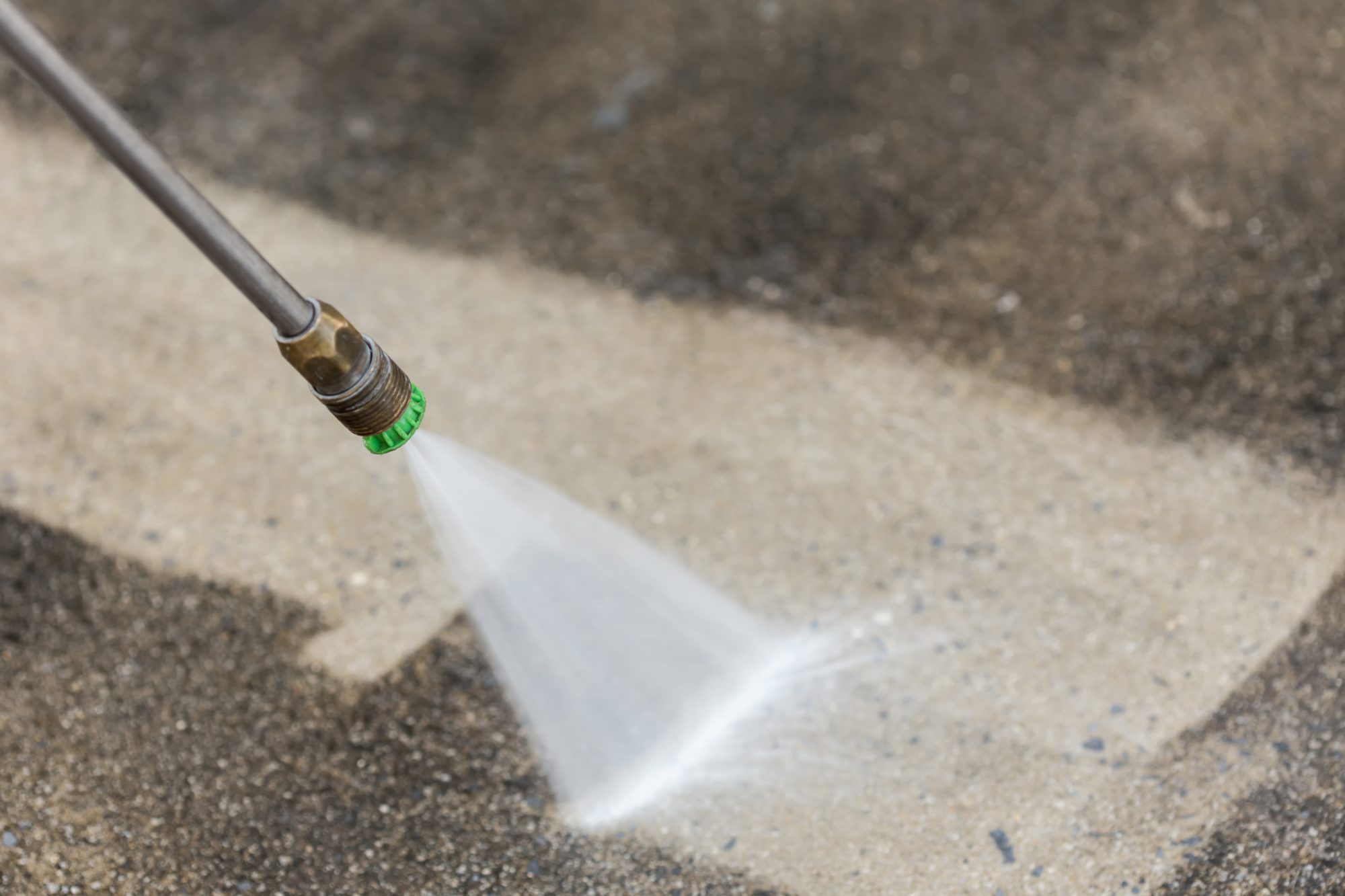
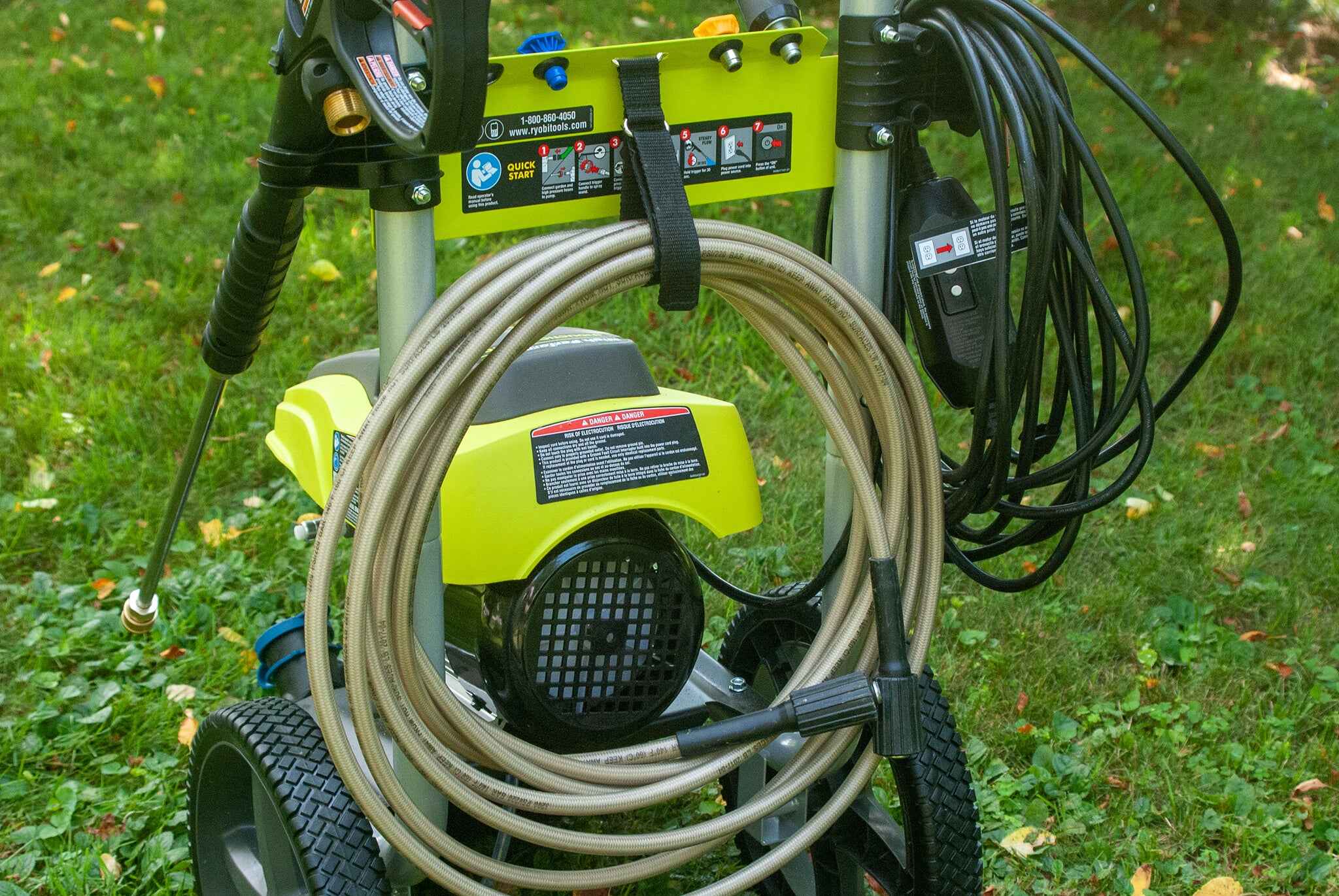
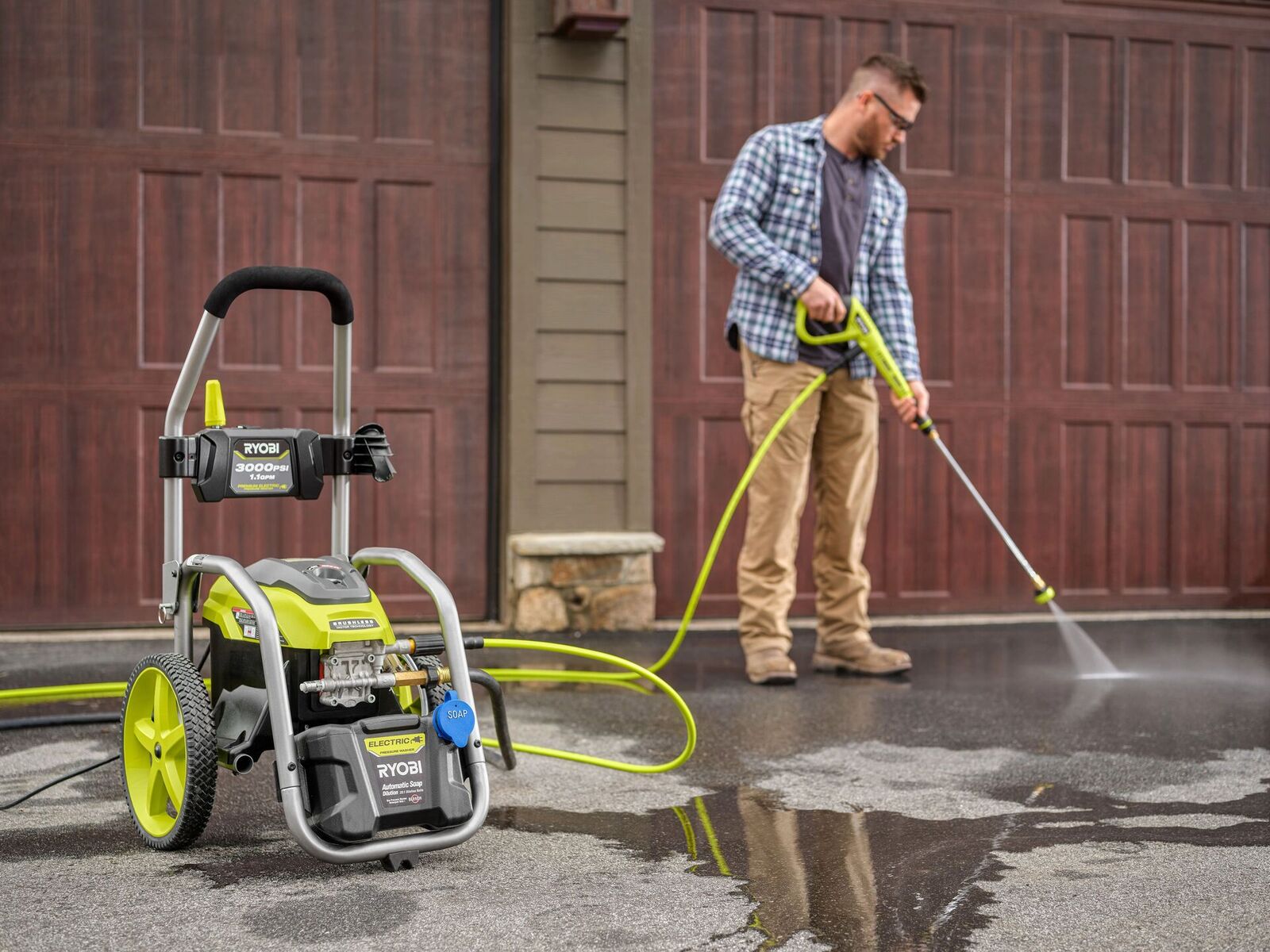
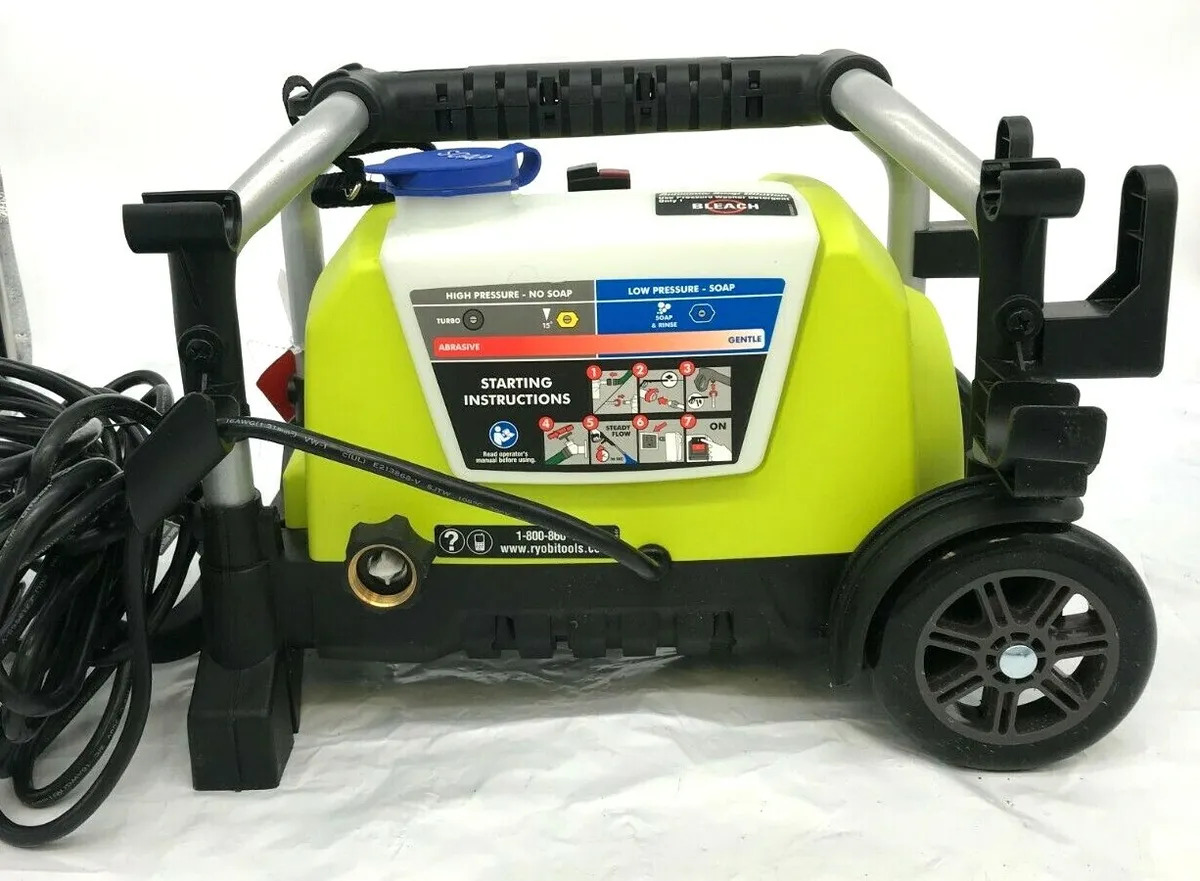
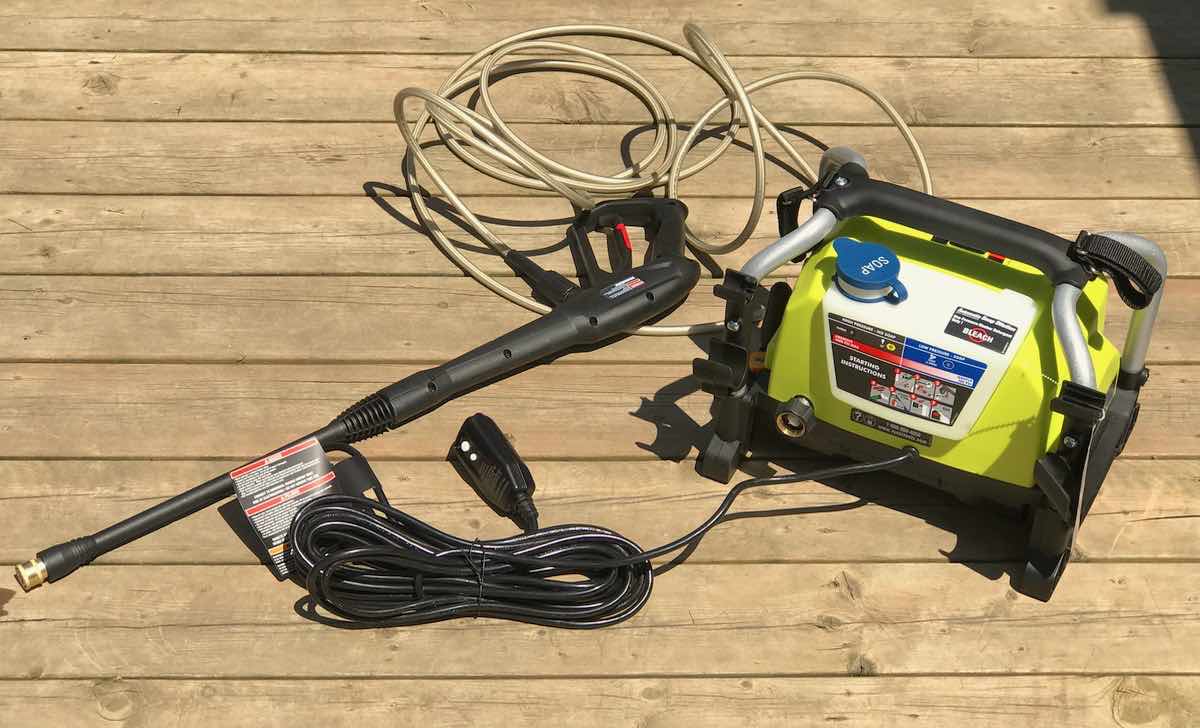
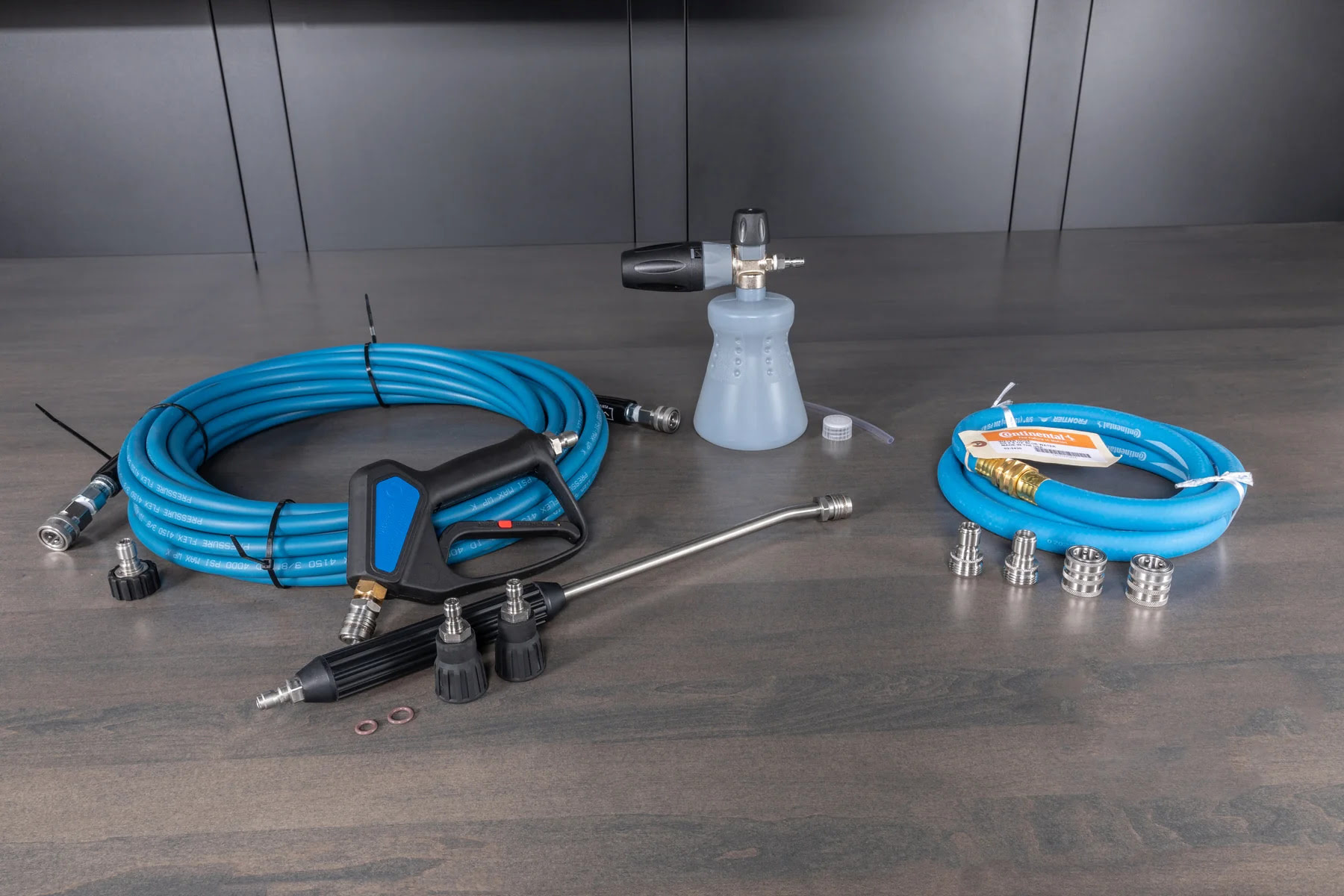
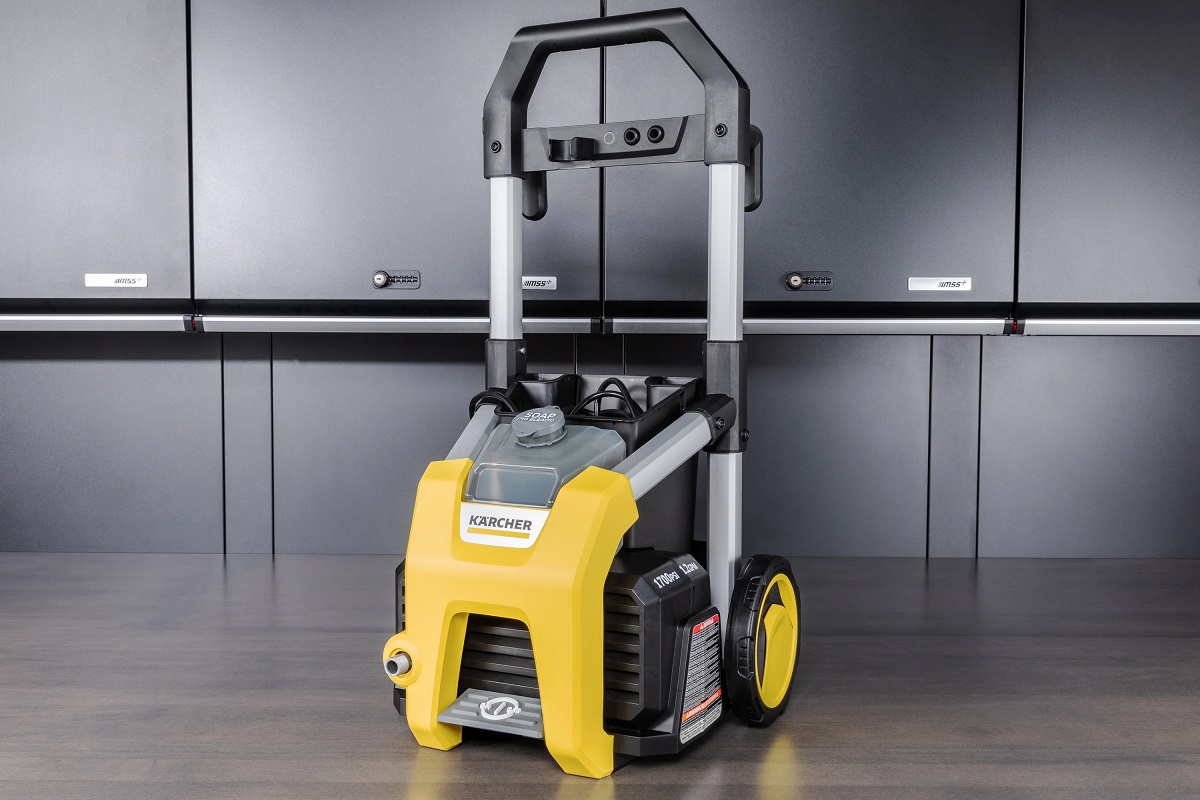
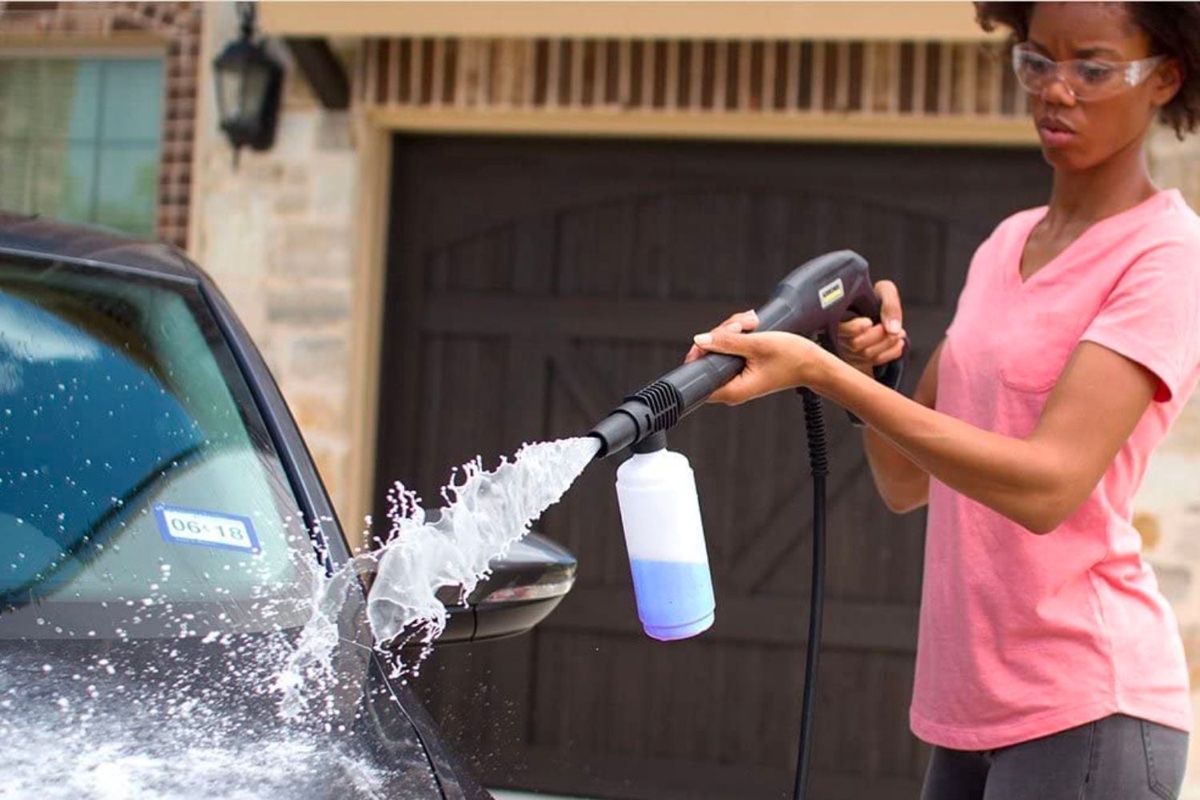
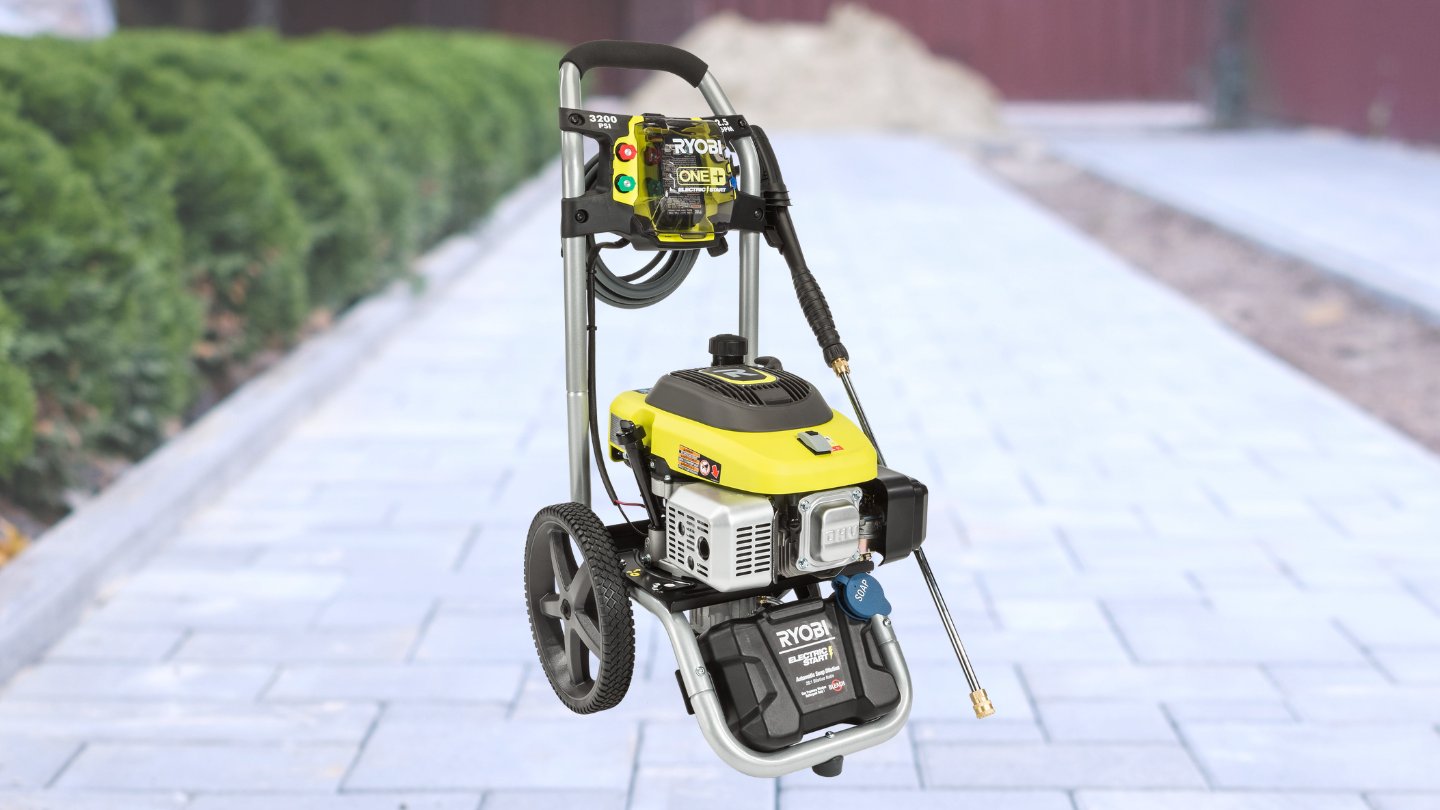

0 thoughts on “How To Use Ryobi Pressure Washer”